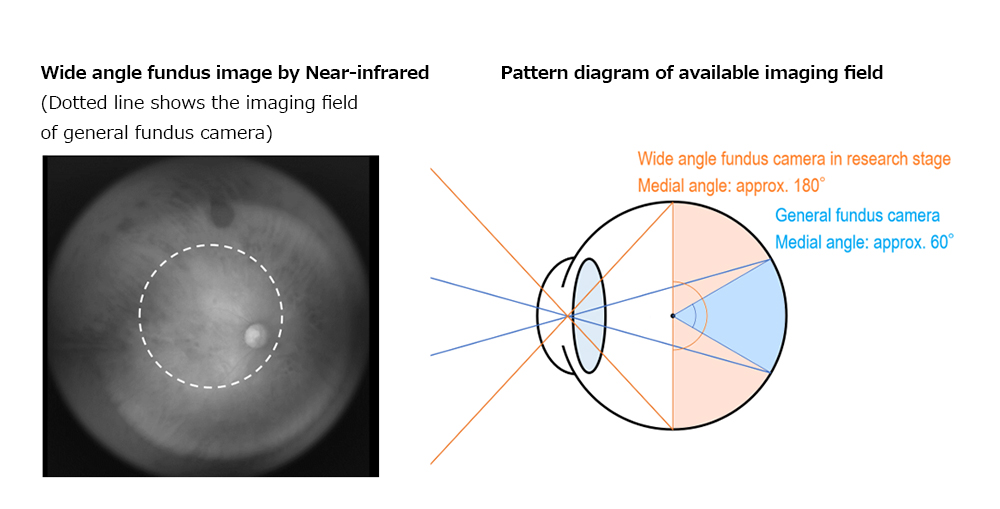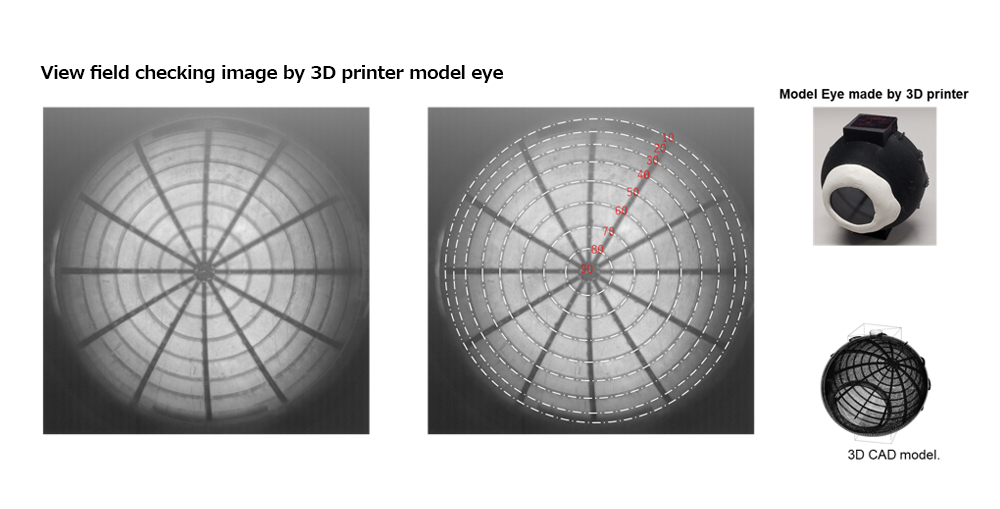September 16, 2021
News Release
Tamron and NAIST Co-Develop Hyper-Wide-Angle Fundus Camera, Enabling 180-Degree Widefield Fundus Photography for Early Disease Detection
Tamron Co., Ltd.
September 16, 2021 – Tamron Co., Ltd. (President & CEO: Shiro Ajisaka; Head Office: Saitama City), an integrated manufacturer of optics and Nara Institute of Science and Technology (President: Kazuhiro Shiozaki; Location: Ikoma City, Nara; hereafter NAIST) announce that they have together developed a widefield fundus camera through joint development between Tamron’s Opto-Science R&D Center and Professor Jun Ohta and Specially Appointed Assistant Professor Hironari Takehara of the Photonic Device Science Laboratory in the Division of Materials Science at NAIST's Graduate School of Science and Technology, and that this development outcome was presented at the 82nd Japan Society of Applied Physics (JSAP) Autumn Meeting 2021 on September 13 under the title of "Development of Hyper-wide Near-infrared Colorized Fundus Camera."
Currently, the main causes of the blindness in Japan are glaucoma, retinitis pigmentosa, and diabetic retinopathy. To prevent blindness caused by these diseases, early detection has been key and periodic fundus imaging examinations have been an effective means of doing so. The viewing angle of the fundus cameras commonly used in medical checkups is currently about 60 degrees, which only enables partial examinations. Therefore, it is believed that the examination of wider-angle fundus image has the potential to significantly improve the probability of the early detection of disease.
Tamron specially designed and prototyped a hyper-wide-angle lens for fundus photography and provided the lens to NAIST. The lens was installed into the near-infrared fundus camera developed by NAIST. Tamron and NAIST advanced R&D to make hyper-widefield fundus photography possible using this new camera. They have confirmed that the viewing angle of the image was about 180 degrees. With the technologies developed here, widefield images of the fundus can be captured without using mydriatic agents to dilate the pupil (eye drops).
These achievements are mainly due to two newly developed technologies. One is the hyper-wide-angle lens prototyped by Tamron. Tamron's advanced lens design techniques contributed as widefield images are necessary to capture the fundus through the pupil. The other is the near-infrared illumination techniques developed by NAIST. Various new technologies have been adopted to stably shine near-infrared light into the wide field of the fundus through the pupil. The skillful combination of these two techniques made hyper-widefield fundus imaging possible.
< Tamron >
After the medical value of the technology is validated together with a medical school, Tamron aims to commercialize the product through collaboration with an existing fundus camera manufacturer. Going forward, Tamron will continue to develop an array of products that meet the demand for quality health care solutions, contributing to the development of society and cutting-edge health care technology and the enhancement of patients' quality of life.
< Nara Institute of Science and Technology (NAIST) >
NAIST plans to undertake efforts aimed to commercialize this equipment. In combination with the near-infrared illumination system technology for acquiring color images developed together with hyper-widefield imaging in this project, NAIST will continue to miniaturize and improve fundus cameras for home health care.


